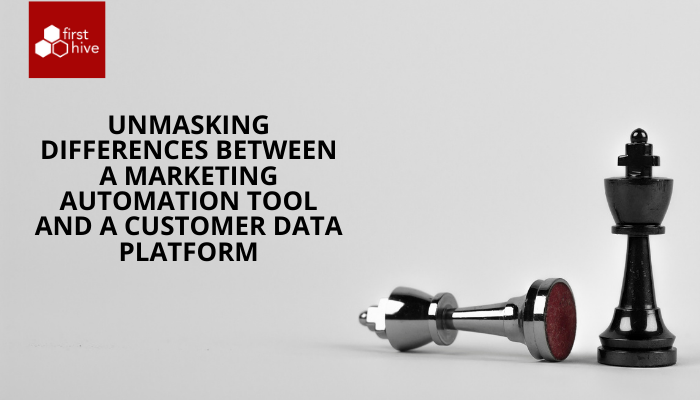How to Use Customer Surveys to Collect Zero-Party Data
April 26, 2021In response to growing privacy concerns and regulations, brands and retailers have begun directly asking consumers for insight into their needs, interests, and intent.
This information—given freely and consensually by customers with the understanding that it’ll be used to personalize their shopping experiences—is known as zero-party data, a subset of first-party data. Typically, zero-party data is collected using surveys, polls, questionnaires, or preference centers.
Although second-party and third-party data is still valuable in some contexts, zero-party data is significantly easier to collect, often more accurate, and provides brands with better opportunities to build direct and meaningful relationships with their customers.
But zero-party data shouldn’t be collected and managed in isolation. Using a Customer Data Platform (CDP), you can collect zero-party data and immediately match it to the correct customer profiles. With all of your customer data—including survey responses, order history, real-time behavior, third-party enrichment, and predictive analytics—housed in one easy-to-use tool for insights activation, you can easily identify and seize opportunities for improving the customer experience.
Here are some tips and strategies for using customer surveys to collect zero-party data.
How to use customer surveys to collect zero-party data
- Send surveys to segmented audiences.
Surveys can help you facilitate a clear and direct value exchange between your business and your customers—but as with any customer engagement technique, surveys reap the best results when they’re segmented and personalized.
By tailoring the messages you send with each survey, you can improve response rates and collect more zero-party data from prospects and customers.
For example, the West Coast Eagles used insights from the Lexer CDP and our custom form builder, Forms, to grow their email database, collect and update customer data, and ultimately boost their sponsorship revenue. They created targeted audience segments and personalized the messages sent with each survey, offering the chance to win free double passes to the AFL finals match in exchange for a response. In just a matter of days, they saw a 61 percent response rate and grew their database by 5% with a cost-per-submission of only $0.36c AUD!
- Include surveys in your sweepstakes campaigns.
Sweepstakes are a high-impact strategy for growing your email list, re-engaging customers, and collecting zero-party data for profile enrichment.
Because sweepstakes offer a prize in exchange for entries, they’re a natural way to incentivize customers to provide personal, zero-party information about their needs, preferences, and interests.
Typically, sweepstakes aren’t associated with an immediate return on investment, but rather intended to gain email opt-ins from prospects for future marketing. However, segmenting and personalizing your sweepstakes campaigns for high-value audiences can lead to immediate purchases.
For example, Black Diamond uses the Lexer CDP to identify high-value customer segments, build lookalike audiences based on these high-value segments, and target with a personalized sweepstakes offer. They saw a 481 percent increase in return on ad spend and a 526 percent increase in sales per email.
- Send post-purchase and post-returns surveys.
One of the most valuable pieces of information you can learn about your customers is why they buy from you and why they return products.
Post-purchase surveys can help you gain a deeper understanding of the buying motivations of new and returning customers, as well as an appreciation for the customer’s overall shopping experience. For example, if high-value customer segments consistently say that they purchase denim for its fit and material, then you’ll want to emphasize those elements in campaigns featuring denim.
Likewise, post-returns surveys can tell you more about reasons behind returns so you can identify opportunities for improving products or aspects of the customer experience. For example, if customers often say they return products because they were overpriced, then you may want to reconsider your pricing strategy or reconsider the value-based messages you use in marketing campaigns.
- Add custom questions to NPS surveys.
The Net Promoter Score (NPS) survey is one of the most popular tools for measuring customer satisfaction—but on its own, it doesn’t actually tell you that much about your customers.
By including additional questions in your NPS surveys, using customer analytics to segment customers by NPS, and exploring their shared characteristics, you can learn more about the reasons behind customer satisfaction or dissatisfaction.
For example, you could ask questions like:
- What motivates you to make a new purchase from our brand? (Worn out, new style, outgrew, new color, etc.)
- Were the items you purchased easy to find?
- On a scale of 1 to 5, how much do you agree that our products are priced fairly for their value?
- Which of the following words would you use to describe our products? (High-quality, unique, ineffective, poor quality, etc.)
The answers to these questions provide qualitative information about why and how your customers interact with your brand. If you find, for example, that a large number of promoters buy new products in new styles and colors, then you can use this information to tailor your retargeting ads to encourage additional sales.
The takeaway
When you’re using customer surveys to collect zero-party data, you can get the best results by:
- Segmenting and personalizing the messages and offers you send.
- Offering a prize, coupon, experience, or exclusive content in exchange for responses.
- Following up after key customer actions such as purchasing or returning.
- Adding custom questions to NPS surveys to understand the reasons behind NPS scores.
Lexer’s CDP gives you the ability to natively collect this data with a secure form builder and unify survey responses with individual profiles without having to use third-party tools.
A version of this article was originally published on Lexer.io. If you liked this, you’ll probably find more value in the original, in-depth version too. Click here to read the full version of “Zero-Party Data: Enhancing Customer Relationships with Consent.”


